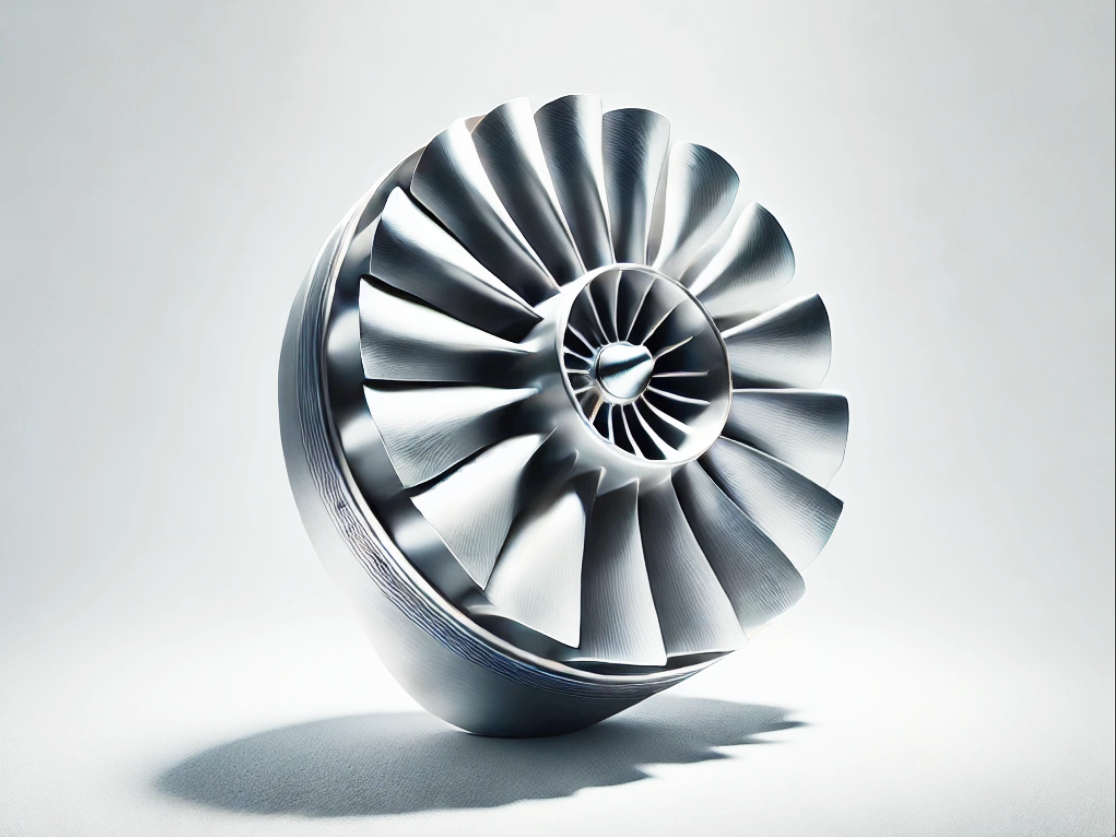Stainless Steel 3D Printing for Aerospace: High-Strength Turbine Blades Engine Components
Introduction
Stainless steel 3D printing offers a transformative manufacturing solution for producing high-strength, heat-resistant components critical to aerospace engines, including turbine blades and structural housings. Using advanced metal 3D printing technologies like Selective Laser Melting (SLM) and Direct Metal Laser Sintering (DMLS), aerospace-grade stainless steels such as SUS316L and SUS630/17-4PH achieve exceptional mechanical strength, corrosion resistance, and thermal stability.
Compared to traditional casting or forging, stainless steel 3D printing for aerospace allows for the fabrication of lightweight, complex geometries with reduced material waste and significantly faster lead times.
Applicable Material Matrix
Material | Ultimate Tensile Strength (MPa) | Yield Strength (MPa) | Elongation (%) | Max Operating Temp. (°C) | Aerospace Application Suitability |
|---|---|---|---|---|---|
570 | 485 | 40% | 800 | Excellent for structural components | |
1100 | 1000 | 10% | 600 | Ideal for high-strength aerospace parts | |
600 | 290 | 55% | 870 | Good for non-critical aerospace structures | |
520 | 220 | 55% | 870 | Suitable for ductile aerospace applications | |
1000 | 880 | 15% | 565 | Strong for aerospace housings and shafts |
Material Selection Guide
SUS316L: Used for turbine blade support structures, engine housings, and airframe components requiring superior corrosion resistance and ductility.
SUS630/17-4PH: Selected for turbine blades, engine brackets, and high-load aerospace parts needing very high tensile and yield strength.
SUS304: Applied in less critical parts such as internal brackets, supports, and non-pressurized structures.
SUS304L: Ideal for parts needing enhanced weldability and ductility, such as sensor housings and tubing.
SUS15-5PH: Perfect for shafts, fittings, and engine mounts demanding high strength and moderate corrosion resistance.
Process Performance Matrix
Attribute | Stainless Steel 3D Printing Performance |
|---|---|
Dimensional Accuracy | ±0.05 mm |
Density | >99.5% Theoretical Density |
Layer Thickness | 20–60 μm |
Surface Roughness (As-Printed) | Ra 5–15 μm |
Minimum Feature Size | 0.3 mm |
Process Selection Guide
Complex High-Performance Geometries: Allows for topology optimization, integrated cooling channels, and lightweight structural frameworks within aerospace engines.
Superior Mechanical Properties: Heat-treatable stainless steels like SUS630/17-4PH achieve yield strengths over 1000 MPa, meeting stringent aerospace standards.
Rapid Prototyping and Customization: Shortens design-to-production cycles by up to 60%, enabling iterative optimization for aerospace innovations.
Corrosion and Heat Resistance: Stainless steel alloys offer operational stability in environments exceeding 600–800°C, vital for engine interiors.
Case In-Depth Analysis: 17-4PH 3D Printed Turbine Blades for Jet Engines
An aerospace OEM sought to produce high-strength turbine blades with integrated internal cooling features for next-generation jet engines. Utilizing our stainless steel 3D printing service with SUS630/17-4PH, we achieved tensile strengths over 1100 MPa, dimensional tolerances within ±0.05 mm, and internal channel structures not feasible with casting. The resulting blades exhibited 20% weight reduction and 30% higher cooling efficiency, improving overall engine thermal management. Post-processing included HIP treatment and precision CNC machining to aerospace-grade finish standards.
Industry Applications
Aerospace and Aviation
Turbine blades and nozzle guide vanes.
Engine structural components and brackets.
Integrated cooling housings and complex ducting systems.
Defense and Military
High-strength aerospace fasteners and fittings.
Lightweight armored structural components for UAVs and aircraft.
Corrosion-resistant parts for naval aviation.
Space Systems
Cryogenic pump housings and thermal shields.
Propellant delivery structures requiring precise tolerances and strength.
Mainstream 3D Printing Technology Types for Aerospace Stainless Steel Parts
Selective Laser Melting (SLM): High-precision stainless steel aerospace parts requiring dense, complex structures.
Direct Metal Laser Sintering (DMLS): Ideal for producing intricate, lightweight stainless steel aerospace components.
Electron Beam Melting (EBM): Suitable for larger, stress-resistant aerospace parts where residual stress needs minimization.
FAQs
What stainless steel grades are best suited for 3D printed aerospace turbine components?
How does 3D printed stainless steel improve engine efficiency and weight reduction?
What are the post-processing steps for stainless steel aerospace 3D printed parts?
Can stainless steel 3D printing achieve the strength required for turbine blade applications?
How does stainless steel 3D printing compare to traditional manufacturing for aerospace engine parts?

